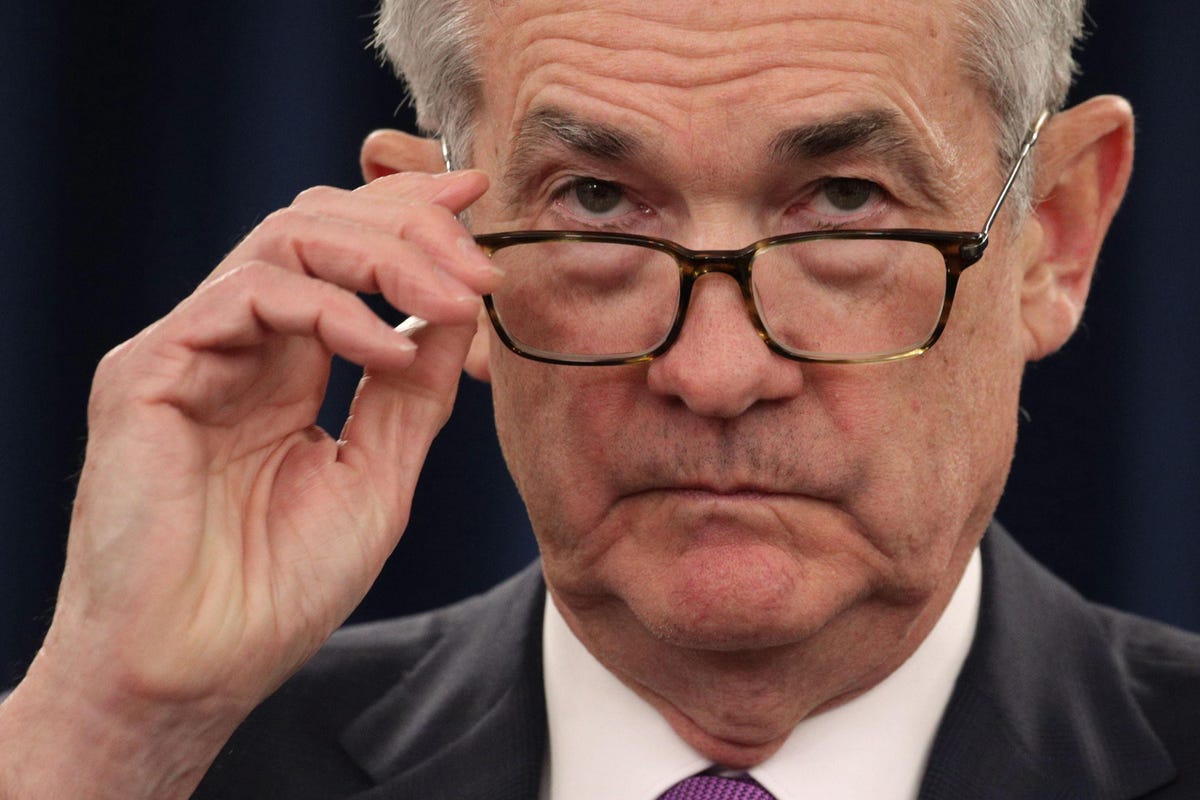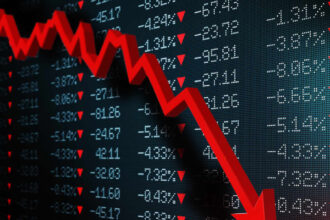The March 22 interest rate decision by the Federal Open Market Committee (FOMC) was surrounded by more uncertainty than usual, because of the new problems in the banking sector. Eight days later, the GDP growth rate for 2023Q4 was revised downward. Why did the Fed continue to raise rates? What’s the state of the economy? And will real estate suffer from it?
The most important thing to remember when evaluating FOMC decisions is that the Fed tries really, really hard not to surprise market participants. There are two big reasons for that. The first is that they don’t want to make inside information valuable enough for investors to break the law to get it. The second is that they want to be able to surprise the market when it really matters—as they did, for example, in October 1998 when they cut rates even without an FOMC meeting.
The “no surprises” rule works especially well when FOMC participants are generally unanimous in their views, as they have been for the last six consecutive meetings. In such a situation, early warning of a change in Fed policy is likely to come from those members who, at a given time, are most likely to break the unanimity. When rates are generally going down, the “hawks”—the members who express the most concern about inflation—are quickest to talk about raising rates to fight it. These days, though, the “doves”—the members who express the greatest concern about unemployment—are quickest to talk about cutting rates to fight it.
Raphael Bostic, the President of the Atlanta Fed, is one of the doves, so when he starts expressing concern about further interest rate cuts, that’s an indication that the unanimity may be softening. While he is not currently a voting member of the FOMC—votes rotate among the regional Bank presidents—non-voting regional Bank presidents still participate. So far, though, he has said nothing of the sort.
In an essay and an accompanying video President Bostic laid out five explicit conditions he “will need to see to consider reversing the course of monetary policy.”
- A narrowing of the gap between labor supply and demand
- Higher interest rates more decisively affecting aggregate demand
- Ongoing recovery in aggregate supply
- Reduction in the breadth of inflation
- Stable inflation expectations
Let’s consider each of them.
Narrowing the Gap Between Labor Supply and Demand
This can mean either of two things: The demand for workers starts to soften, or the supply of workers starts to increase. There’s no sign yet of the first, but February brought the first meaningful signs of the second. As pointed out two weeks ago, the employment-to-population ratio has increased for several vulnerable groups of workers tracked for their early-warning value:
- Young adults (16-24): Up from 50.8% to 52.3% over the past 10 months
- White women: Up from 54.0% to 54.5% over the past three months
- Black adults: Up from 57.9% to 59.8% over the past six months
- Adults with less than a high school diploma: Up dramatically from 43.9% to 45.5% during February
Those increases mean not only that the workers who most need the support of a strong labor market are getting it. They also mean that they are responding by re-joining the labor pool—increasing labor supply to meet labor demand, as the doves want to see.
Reduction in Aggregate Demand
Consumption, retail spending, and other measures of aggregate demand have softened from the aggressive post-pandemic sprees, but it has been difficult to discern whether the softening means that “higher interest rates [are] more decisively affecting aggregate demand,” or simply that the pent-up demand for certain types of spending—such as vacations—has been met.
The fact that the final estimate of 2023Q4 GDP growth was revised downward, though, at least adds to the evidence that aggregate demand is softening. That’s because the downward revisions didn’t come from those segments of the economy where there was likely pent-up demand (except for one: motor vehicle maintenance and repair). Instead they came in exports of other business services (including professional and business management consulting as well as research and development services), and in domestic financial services and domestic other services (led by personal care services). So, there is some evidence that the aggregate demand condition is on its way to being met.
Ongoing Recovery in Aggregate Supply
This condition is probably the most difficult to assess. Supply-chain problems are not nearly as obvious as they were during the pandemic and its aftermath—but the war in Ukraine (disrupting energy and food markets) and the strained relations with China (disrupting manufacturing relationships) mean that the risk of supply-chain-related problems remains high. In short, this condition has to be rated as “not clear yet.”
Reduction in the Breadth of Inflation
What this means is that the Fed wants to see inflation decline across the board—not just for a few of the goods or services that have the biggest impact on the overall price index. Gasoline prices, for example, are notoriously volatile and a big part of consumer spending, so a decline in gas prices could easily make it look as though inflation has been conquered even if it’s still raging in other parts of the economy.
This part of the battle, though, seems well on its way to being won. For example, the San Francisco Fed produces measures of “Dispersion of Inflation” that measure the percent of all goods (and of all spending) for which prices increased and the percent for which they declined. Last February only 3.9% of all goods declined in price, while 96.1% showed price increases—a “breadth of inflation” (92.2%, the difference between those two figures) that the country hadn’t seen since August 1981, when cigar-chomping Fed Chairman Paul Volcker had pushed the Federal Funds Rate up above 22% (!) to fight it. Over the past 11 months, though, the breadth of inflation measure has fallen to just 72.5%—not quite where it needs to be (around 50%), but a whole lot closer to “perfect” than to “light my cigar.”
Stable Inflation Expectations
The final condition laid out by Atlanta Fed President Bostic is for consumers’ expectations of future inflation to recede to an acceptable level. According to the New York Fed’s Survey of Consumer Expectations, the median level of inflation expected over the next three years peaked at 4.2% in late 2021, but has declined completely to an entirely unthreatening level of 2.7% in February 2023. The one-year expectation has not yet reverted entirely to the acceptable range—but its decline from 6.8% in June 2022 to 4.2% in February 2023 means it has covered almost two-thirds of the necessary ground. As with the breadth of inflation, this battle is well on its way to being won.
What About Banks?
The economy has made great progress toward achieving all five conditions set out by Atlanta Fed President Bostic—but inflation has not yet been “whipped.” In fact, the only reason that some market participants expected the FOMC to back away from its inflation-fighting rate hikes is the trouble in the banking sector that started with the VC-focused Silicon Valley Bank (SVB) and continued with the crypto-focused Signature Bank. It is possible that expanded trouble in the banking sector could finally win the rest of the battle that interest rate hikes have been fighting by “more decisively affecting aggregate demand.”
The banking sector simply isn’t particularly weak. The collapse of two U.S. banks doesn’t mean that many others are in trouble: it means that two banks did a poor job of diversifying their exposures and managing their concentration risks. The systemic risk posed by the SVB/Signature dual failure is in the same league as the systemic risk posed by the failure of Long-Term Capital Management back in 1998: sizeable enough to prompt a bailout, but not sizeable enough to significantly affect the economy.
The Credit Suisse (CS) problem is very important for Switzerland, but that doesn’t mean it’s important for the United States. The fact is that Credit Suisse has been helping clients—including Americans—evade U.S. and international banking regulations for many years. (That basic approach, after all, describes much of Swiss history and much of the source of the country’s wealth.) The question was always whether the conflict between CS’s desire to make money and governments’ desire to enforce laws would tear the institution apart. But the fact that the struggle was so pitched certainly made it difficult for CS to be more successful in the U.S. market—which, thankfully, limits its systemic risk to the U.S. economy despite its size.
There is still time for the SVB, Signature, and CS problems to ripple through the rest of the economy. So far, though, it seems more likely that the banking system will rise up to the challenge.
What About Real Estate?
If the FOMC continues to raise interest rates, that will increase the difficulty that borrowers already face in finding debt and equity capital at good terms. If the FOMC stops raising rates, though, that will be only because economic growth is definitely softening and/or the banking system is under stress—which, again, will increase difficulty in finding capital. The capital situation is already playing out with some investment managers. For example, Andria Cheng of CoStar, in a recent article about Blackstone
BX
There is likely to be additional pain among real estate investment managers—whether interest rates continue to increase or whether they merely stay at something close to their current levels. As with the banking sector, though, “pain” doesn’t mean “crisis.” Shocking failure to manage risk made SVB inherently risky; overexposure to a silly “asset” made Signature inherently risky; stubborn resistance to laws made Credit Suisse inherently risky—but most banks, in the U.S. and in Europe, have been managed more carefully.
In real estate, the office sector is inherently risky partly because many investors and investment managers seem persistently to underestimate the capital expenditures required to maintain a competitive position in the office market. Also in real estate, depending on floating-rate loans, without hedging the risk of interest-rate increases—during a period of years in which the Fed made it clear rates could not stay low forever—is inherently risky. But pain among holders of office properties, among floating-rate borrowers, or among managers who failed to properly underwrite cap-ex requirements does not translate to a real estate crisis. What it translates to is simply what Warren Buffett is credit with pointing out: “Only when the tide goes out do you learn who has been swimming naked.”
Read the full article here










